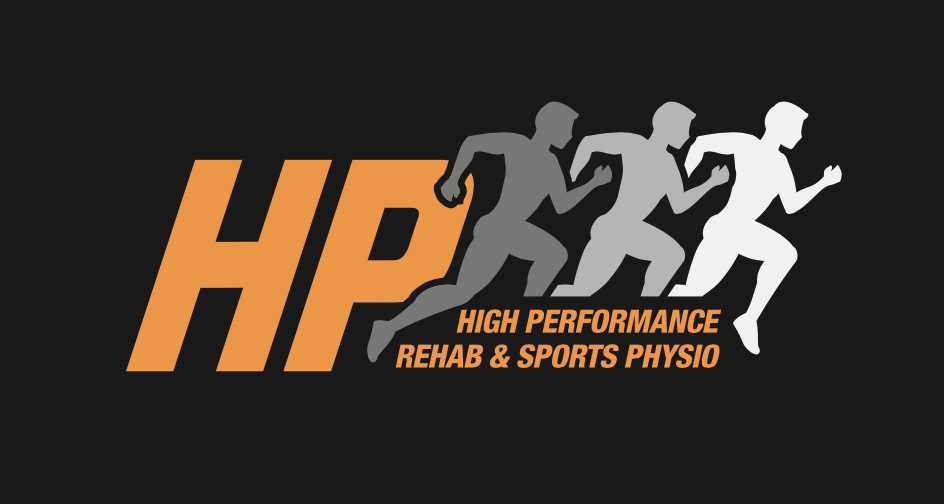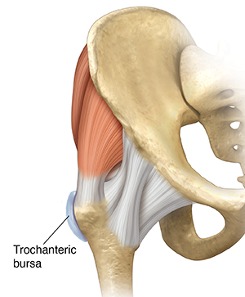A common cause of pain on the lateral (outer side) part of the hip is from tendinopathy of either the gluteus minimus and/or gluteus medius tendon.
What is the Cause?
Gluteal tendinopathy is often caused by a change in load of these tendons with a spike or change in activity levels, or from a new form of exercise. A baseline weakness of the attached glute muscles also contributes. This creates a higher demand than the tendon can tolerate, which can elicit a painful response and tendinopathy. This pain typically begins the day following exercise, and gradually worsens as you continue to move and exercise.
The large bursa (a fluid-filled sac – in the picture below) in the lateral hip is the greater trochanteric bursa. When the gluteal tendon becomes overloaded and painful, this often causes the bursa to also become inflamed and painful – called bursitis.
ANATOMY
The hip is a ball and socket joint. The ball arises at the top of the thigh bone, called the femur. The socket, called the acetabulum, is made of the three bones of the pelvis – the ilium, ischium and pubis.
The gluteus medius and gluteus minimus originate from the ilium of the pelvis and insert onto the greater tuberosity of the femur. As such, they are important abductors of the femur relative to the pelvis – meaning they take the leg away from the body. They also help to control the rotation of the hip joint and stabilise the hip when walking or running.
The greater trochanteric bursa is located between the femur and the gluteal tendons and functions to de-load the tendon friction over the bone. If this occurs excessively it can cause high levels of pain
How Does This Injury Present?
A patient will typically report their symptoms are felt at the start of exercise (e.g. the first 1km of a walk, or the first few steps after getting up from a chair), which then eases as you “warm-up”. Painful symptoms may then return toward the end of an exercise session as the body is fatiguing.
Patients may also report walking up and downstairs is painful, lying down directly on the affected side or crossing their legs also replicates pain.
This injury is far more common in women due to the differences in hip anatomy between men and women.
What is the treatment?
Like other tendinopathies, diagnosis and determining the type of tendon injury is crucial as early as you have symptoms. Offloading the tendon somewhat while maintaining physical activity is important if this can be done in a fashion that does not aggravate your lateral hip symptoms; either during, after or the following morning.
Based on your examination, you will be provided with a small series of exercises to begin improving the strength tolerance of your affected tendons. Once symptoms are beginning to settle, your prescribed exercises will likely become progressively more difficult to facilitate the healing and strength of your tendon and musculotendon unit.
Tendon-based injuries may take an extended period to fully recover, this is in part due to the lower blood supply compared to other soft-tissues, but it is possible to return to your full levels of activity prior to full resolution of symptoms. Rehab timeframes are often months rather than weeks for full resolution of symptoms.
Imaging may be used to assist in the diagnosis and management of this injury if symptoms remain persistent.
If you are having any lateral hip pain, please feel free to contact one of our Sports Physiotherapists for assessment and establishing a management plan for your injury.



